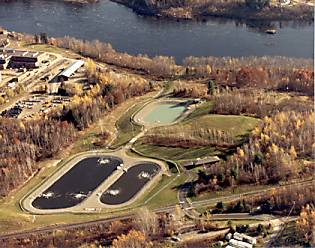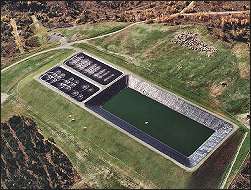
 astewater
lagoons have been used as a process for
wastewater treatment for
centuries. In the 1920's artificial ponds were designed and constructed to
receive and stabilize wastewater. By 1950, the use of ponds had
become recognized as an economical wastewater treatment method for small
municipalities and industries. As of 1980,
approximately 7,000 waste stabilization
lagoons were in use in the U.S. Today, one third of all secondary
wastewater treatment facilities include a pond system of one type or
another. Of these, just over 90% are for flows 1 MGD or less. But ponds can
be astewater
lagoons have been used as a process for
wastewater treatment for
centuries. In the 1920's artificial ponds were designed and constructed to
receive and stabilize wastewater. By 1950, the use of ponds had
become recognized as an economical wastewater treatment method for small
municipalities and industries. As of 1980,
approximately 7,000 waste stabilization
lagoons were in use in the U.S. Today, one third of all secondary
wastewater treatment facilities include a pond system of one type or
another. Of these, just over 90% are for flows 1 MGD or less. But ponds can
be
 used for larger cities for wastewater treatment as well. Some of the largest
pond systems in this
country are in Northern California, serving such cities as Sunnyvale (pop.
105,000), Modesto (pop. 150,000), Napa (pop. 175,000), and Stockton (pop.
275,000). used for larger cities for wastewater treatment as well. Some of the largest
pond systems in this
country are in Northern California, serving such cities as Sunnyvale (pop.
105,000), Modesto (pop. 150,000), Napa (pop. 175,000), and Stockton (pop.
275,000).
|

